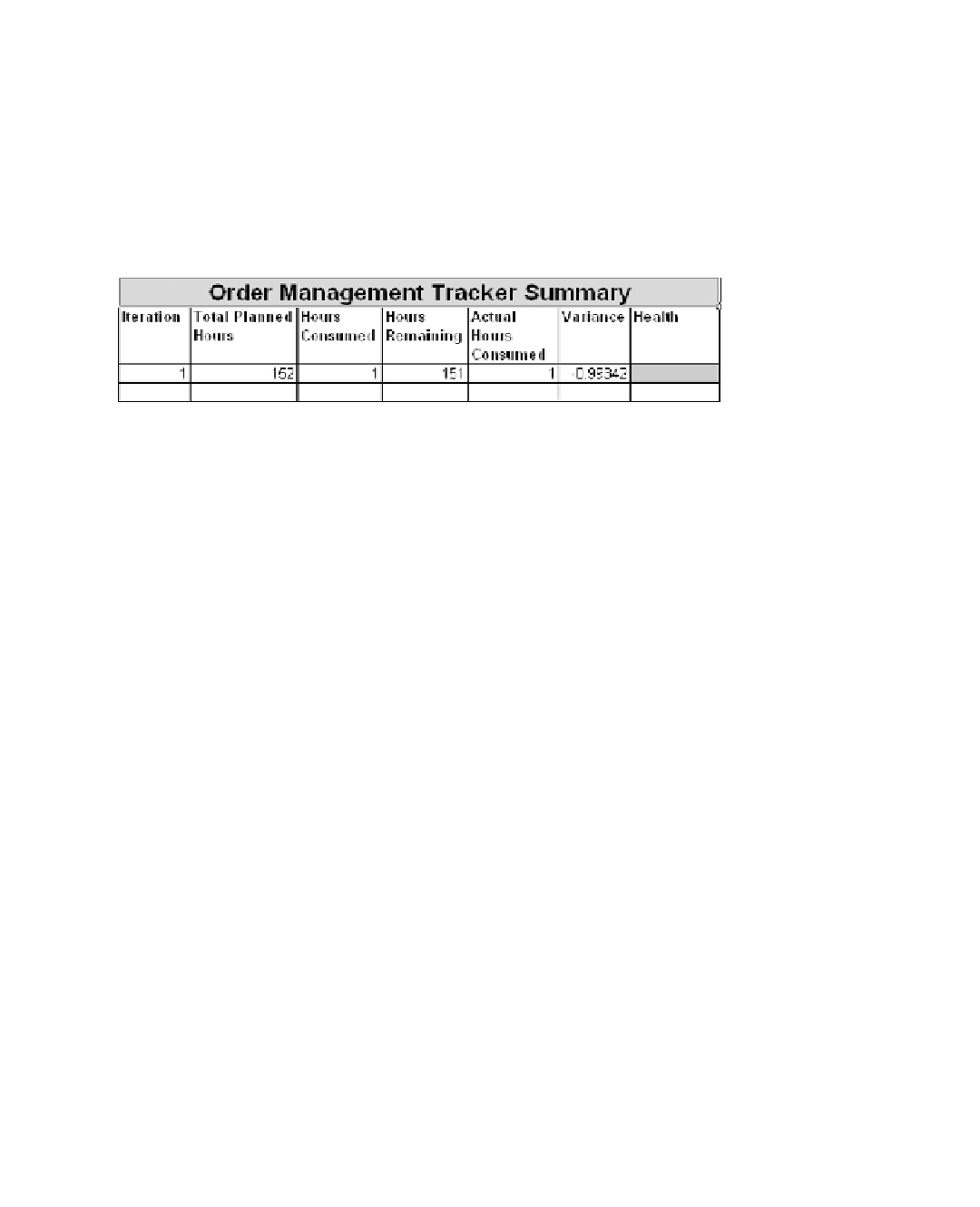Java Reference
In-Depth Information
As shown in Figure 7-1, each row in the tracker represents a task that needs to be
carried out in the iteration. As part of the planning and tracking, you have the generic
attributes such as estimated hours, actual hours, start date, end date, and so on. You can
also see the resource or person who has been entrusted with a particular task. One
important attribute worth noting in this planner is
variance
. Variance helps keep track of
the “health” of the iteration. A positive variance generally indicates that a task has taken
longer than initially estimated. You can also maintain an overall project summary tracker,
as shown in Figure 7-2. This gives a quick snapshot of the overall progress of a project.
Figure 7-2.
Overall project summary tracker
Architecture
Traditional projects tend to build a complete application architecture in a planned way.
However, experience has shown that this big-bang approach often results in failures.
Application architecture depends on a variety of factors including the functional and
nonfunctional requirements. It is not always possible to think and incorporate all the
issues that affect architecture in advance. As the customers business requirements
change and the team gets deep into the development phase, the cracks in the architec-
ture are revealed.
XP, on the contrary, believes in evolutionary architecture. Architecture-related tasks
consume a significant portion of the time in the first few iterations. The project starts
with a base architecture that evolves through the iterations. Figure 7-3 shows the archi-
tecture for the example OMS.

